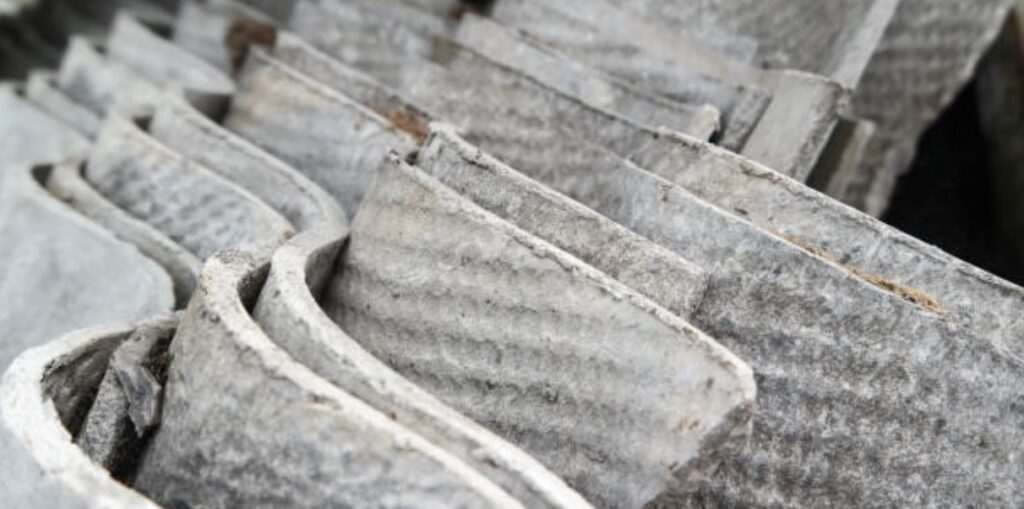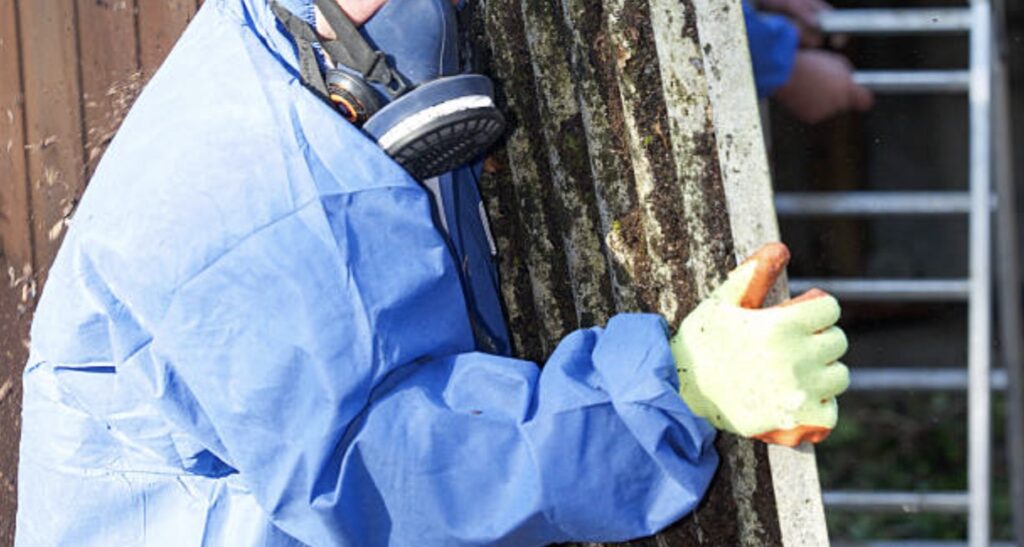Asbestos refers to a group of naturally occurring fibrous minerals once widely used in UK construction due to their heat resistance and durability. From insulation to cement sheeting, asbestos-containing materials (ACMs) were commonplace in homes built before the late 20th century.
However, exposure to asbestos fibres can lead to life-threatening conditions such as mesothelioma, asbestosis, and lung cancer.
For homeowners and landlords, identifying asbestos isn’t optional—it’s a legal and health imperative. Understanding where asbestos may exist and how to respond is the first step in safeguarding occupants and ensuring compliance with the Control of Asbestos Regulations.
Key Asbestos Historical Clues
Asbestos was most heavily used in UK construction from the 1950s through to the early 1980s. While its use declined following early regulations, asbestos wasn’t fully banned until 1999.
Homeowners can check the build date using property deeds, planning applications, or local council archives. Even post-1980s buildings may contain leftover asbestos stock or illegally installed ACMs, so vigilance remains important.
Four Quick Asbestos Home-Check Indicators
There are several early warning signs that asbestos may be present in a property:
- Build date before early 1980s – A strong indicator, especially if records confirm original construction or major works during the asbestos peak period.
- Vermiculite loose-fill in lofts – Often appears as greyish-gold granules with a flaky texture; can contain amphibole asbestos fibres.
- Vinyl floor tiles or underlay – Typically dark-coloured, rigid 9×9-inch tiles or thick black adhesive may contain chrysotile.
- Corrugated roofing or cement panels – Often found in garages, sheds, or cladding; rough-textured and grey, resembling concrete but lighter.

Common Asbestos-Containing Materials
We commonly find asbestos-containing materials (ACMs) in UK homes across a range of building products and decorative finishes, including:
- Vermiculite insulation – Loosely poured into loft spaces; may be contaminated with amphibole asbestos such as tremolite.
- Artex/textured coatings – Decorative ceiling and wall finishes with swirled or stippled patterns; often contain chrysotile fibres.
- Asbestos cement sheets, gutters, and water tanks – Grey, fibrous components used externally or in lofts; lower friability but still hazardous when damaged.
- Millboard fireproofing and ceiling rosettes – Found behind fireplaces or as ornate ceiling fixtures; highly friable and prone to fibre release when deteriorated.
Assessing Asbestos Friability and Damage
Friability refers to how easily a material crumbles and releases asbestos fibres into the air. Homeowners can gently assess suspect asbestos materials using a damp cloth—if the material begins to flake or shed, it may be friable and hazardous.
However, this should be done cautiously and only to observe surface conditions. Never scratch, sand, or break suspected ACMs. If in doubt, isolate the area and seek professional advice.
DIY Asbestos Testing Limitations
Home asbestos testing kits and smartphone apps may offer quick results, but they come with limitations. Kits often include gloves, sample bags, and postage to a lab, but DIY sampling risks asbestos fibre release if done incorrectly.
Some apps use visual recognition or moisture readings but cannot confirm asbestos content. The safest option is always to use UKAS-accredited labs and professionals. While home kits may confirm asbestos presence, only a formal survey provides legal clarity and accurate risk assessment.
When to Engage a Professional Asbestos Surveyor
An asbestos management survey is used for routine occupancy, while a refurbishment or demolition survey is required before invasive works.

Always choose UKATA- or ARCA-accredited asbestos surveyors for surveillance with proof of insurance and past experience. Ask about the type of asbestos survey they’ll conduct, whether lab testing is UKAS-accredited, and what the report will include.
Asbestos Sampling Protocols and Laboratory Analysis
If asbestos sampling is necessary, the area should be dampened and ventilated, and the sampler must wear PPE including a P3-rated respirator and disposable coveralls.
The asbestos sample is then sent to a lab for testing, typically via Polarised Light Microscopy (PLM) or Scanning Electron Microscopy (SEM). PLM detects asbestos fibre types and concentrations, while SEM provides detailed surface structures. Lab reports will identify the asbestos type, percentage content, and friability—essential data for deciding next actions.
Asbestos Interim Safety Measures
Recommended set of interim asbestos safety measures that can reduce immediate risk before professional remediation begins, including:
- Encapsulation of stable ACMs – Use specialist sealants to lock in fibres and minimise the chance of disturbance.
- Restricting access to affected areas – Limit entry to rooms or zones with known or suspected asbestos to reduce exposure.
- Installing clear warning signage – Mark doors, storage areas, or surfaces with asbestos hazard labels to alert occupants and contractors.
- Using portable air-monitoring devices – Track airborne fibre levels in real time; it’s useful as a temporary measure before formal surveys.
- Scheduling professional assessment – Plan for accredited inspection and removal to replace temporary controls with permanent solutions.
Risk-Based Asbestos Removal Decision Flow
Not all asbestos must be removed—decisions depend on risk. If ACMs are intact, sealed, and unlikely to be disturbed, managing them in place is often safer and legally acceptable. However, high-risk materials (e.g., friable lagging in occupied spaces) should be removed by licensed contractors.
Proper asbestos removal involves containment zones, negative-pressure units, wet techniques, and clearance air testing.
Legal Requirements and Asbestos Insurance Considerations
Under the Control of Asbestos Regulations 2012, landlords and employers are legal duty holders. They must maintain asbestos registers and management plans and notify HSE before licensable work begins.
Accurate records help defend against civil claims and avoid prosecution. Failing to disclose known ACMs during property sales or rentals can invalidate insurance and lead to liability for future exposure.
